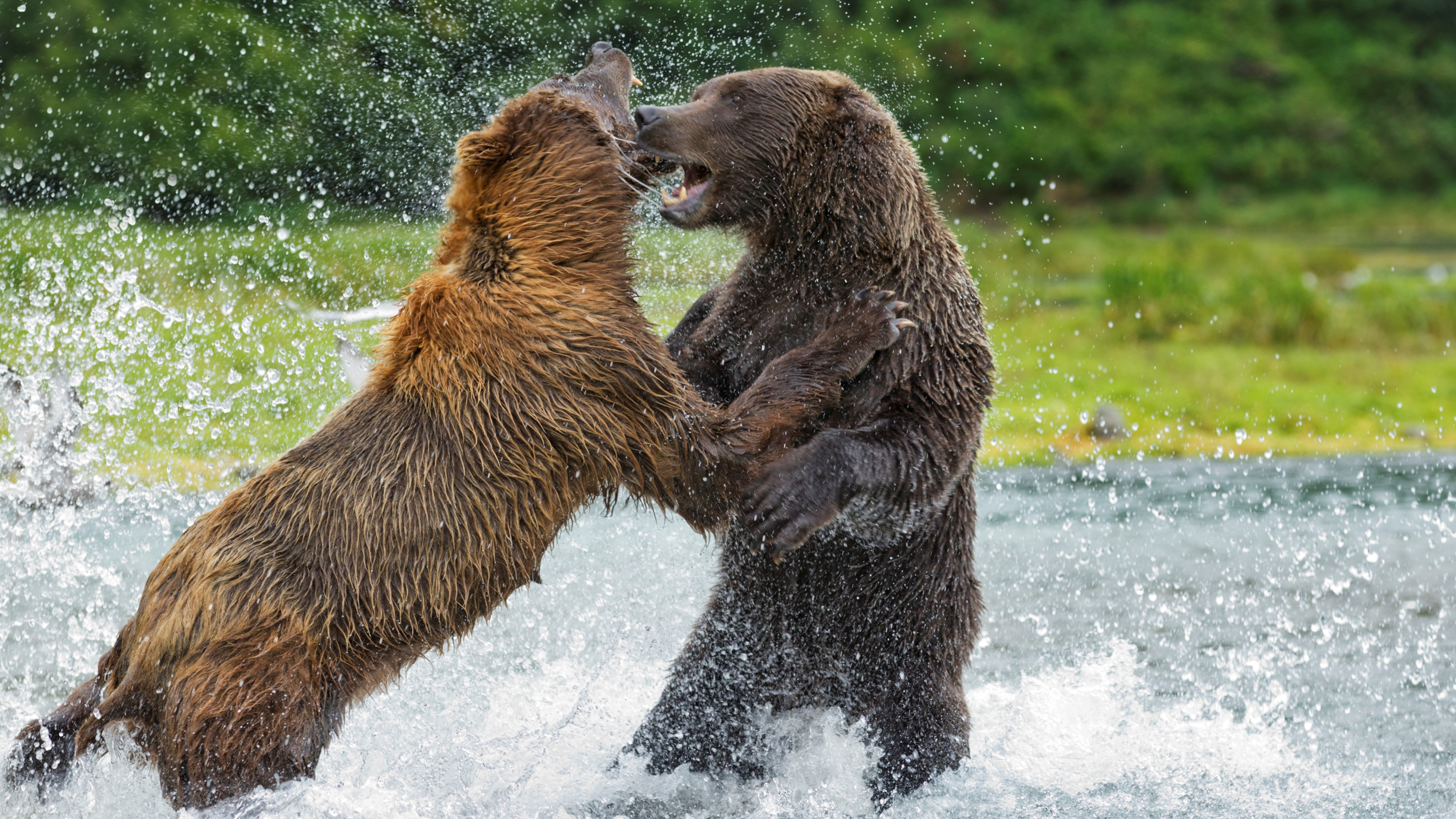
A wildlife expedition guide has shared a video of the "most extreme bear interaction" he has seen in his 25 years on the job. The clip, which you can watch below, shows two huge male grizzly bears locked in a vicious fight for dominance at Lake Clark National Park and Preserve, Alaska.
Brad Josephs, who posted the video on YouTube earlier this week, says that his mission is to encourage appreciation and conservation of wilderness, particularly wild carnivores, which are under threat from humans.
"The bears and wolves and cougars are the spirit, soul and character of the wilderness," he says. "Without them, the mountains are sad and empty."
Lake Clark is home to a vast array of wildlife, including grizzlies, black bears, moose, wolves, and caribou. Food is plentiful thanks to the protein-rich sedges and other edible plants, tidal flats full of clams, and salmon that migrate each summer to spawn. According to the National Park Service (NPS), this diet means the largest males can weigh over 1,000lb by the time they're ready for hibernation.
Park biologists have counted as many 219 brown bears within a 54 square mile area, but despite their population density, vicious fights like the one above are relatively rare. The abundance of food makes it easier for bears (which are usually solitary animals) to tolerate living in close proximity, and they usually prefer to establish a hierarchy through vocalizations, scent, and body posturing.
Bear safety
Grizzlies and black bears can be found throughout Lake Clark, so it's important to take precautions if you're planning a trip when the park reopens for the season. The NPS warns visitors to take particular care when storing food and garbage to prevent bears becoming habituated. The park has its own bear canisters for guests to use, and they're also available to rent locally.
When hiking in the area, make sure you stay alert at all times. The sooner you spot a bear, the more time you'll have to react appropriately. Remember, you might hear or even smell a bear before you see it.
All the latest inspiration, tips and guides to help you plan your next Advnture!
"Bears don't like to be surprised," advises the NPS. "A surprise encounter with a bear is dangerous. Avoid surprises by traveling in open areas with good visibility. Make noise as you walk, particularly in if visibility is poor – talk, clap or even sing. Be extra alert in windy conditions or near noisy streams that mask your sound."
For more advice, see out guides what to do if you meet a bear and wildlife safety: eight tips for unexpected encounters.

Cat is the editor of Advnture, She’s been a journalist for 15 years, and was fitness and wellbeing editor on TechRadar before joining the Advnture team in 2022. She’s a UK Athletics qualified run leader, and in her spare time enjoys nothing more than lacing up her shoes and hitting the roads and trails (the muddier, the better), usually wearing at least two sports watches.
